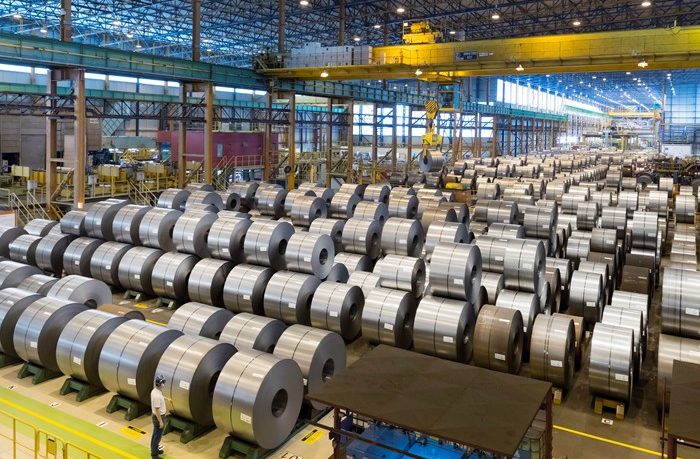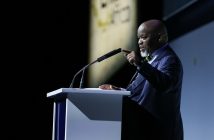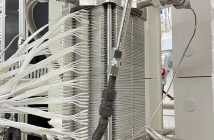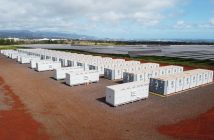- ArcelorMittal, the world’s second largest steelmaker and Europe’s largest producer, plans to produce fossil-free steel via a process known as H-DRI-EAF.
H-DRI-EAF uses hydrogen (H) as a reductant of iron ores in a Direct Reduced Iron (DRI) shaft furnace. The DRI would is then used as a feedstock for an Electric Arc Furnace (EAF). Green hydrogen will be produced via solar-powered electrolysis.
Alex Griffiths, principal analyst, steel and iron ore, at global natural resources and energy consultancy Wood Mackenzie, said: “AcelorMittal plans to start H-DRI-EAF production by 2025 at its Sestao steelworks, in Spain.
“Starting fossil-free steel production at Sestao in 2025 would beat the proposed 2026 start-up of Sweden’s HYBRIT project.”

Arcelormittal is one of the top 10 GHG emitters in South Africa, emitting more CO2 per year than the entire population of the City of Cape Town, and facing a criminal prosecution for violation of its air emission licence. Credit: leonie.photoshelter.com
He said ArcelorMittal’s Sestao H-DRI-EAF project is less ambitions as HYBRIT. Sestao already has two EAFs ready to go, whereas HYBRIT must construct them. Both projects rely on financial support from their respective governments, but HYBRIT is developing the hydrogen electrolyser in-house. ArcelorMittal’s hydrogen will be supplied by a consortium of third parties.
Griffiths added: “Nevertheless, construction of a solar-powered hydrogen electrolyser ready to supply hydrogen to a new DRI module, all by 2025 – just four years away – is impressively swift.
“It also demonstrates how decarbonisation of the European steel industry is gaining pace.
“After being the only player in the race for many years, HYBRIT may decide it does not want to come second and could speed up commissioning. A third company, Sweden’s H2GS, is also planning construction. Will anyone else enter the great fossil-free steel race?”
He said: “For decarbonisation, who wins the H-DRI-EAF race does not matter. It matters how much is ultimately produced.
“Our base case view is that in 2050 the EU will be consuming less than 10 million tonnes of DRI in steelmaking – with a third of that volume imported.
“If EU steel is to keep carbon emissions low enough to be compliant with a 2C warming scenario, then DRI consumption must be five times higher than our base case – at just under 50 million tonnes.”
Author: Bryan Groenendaal
Source: Woodmac











